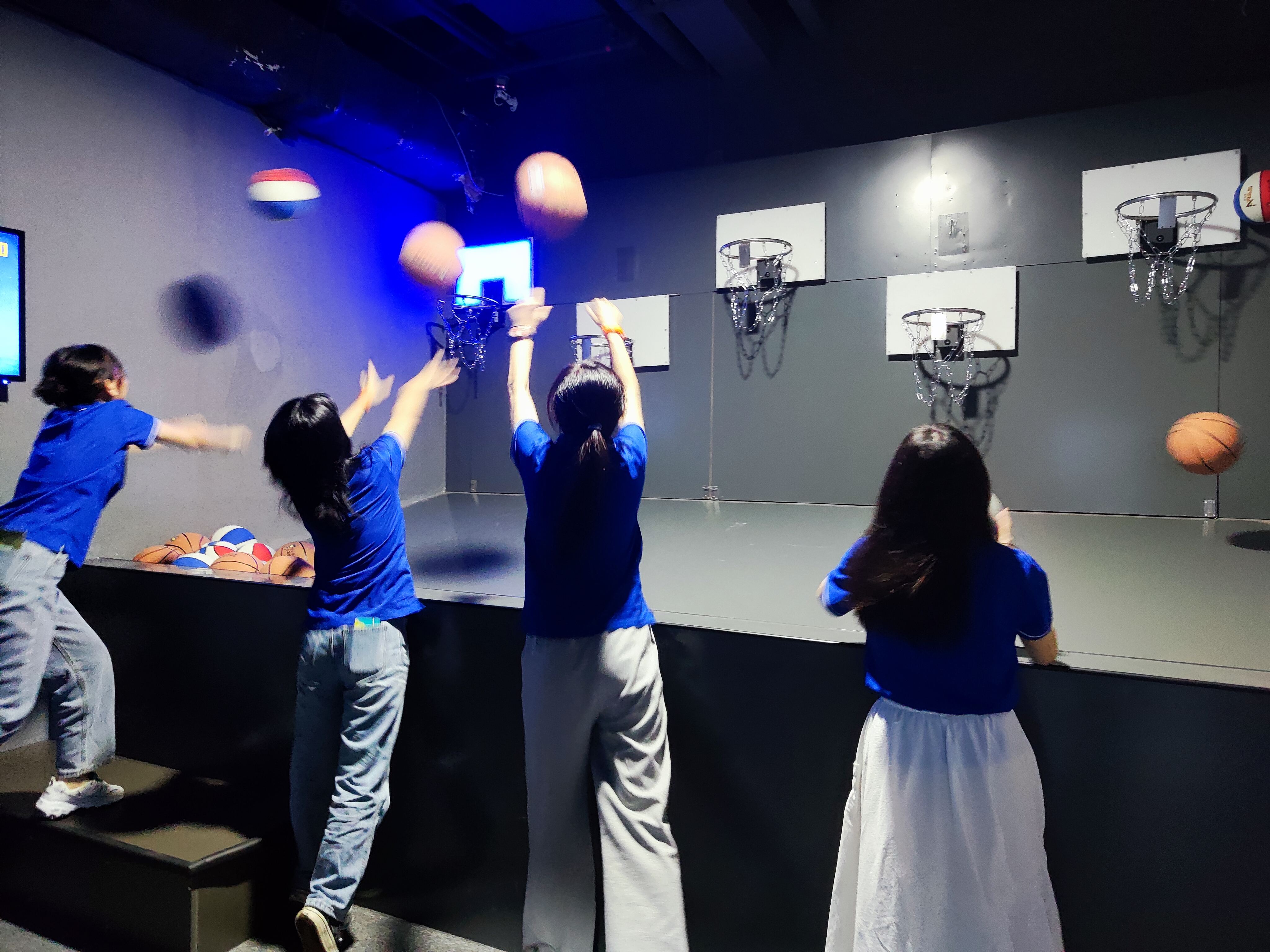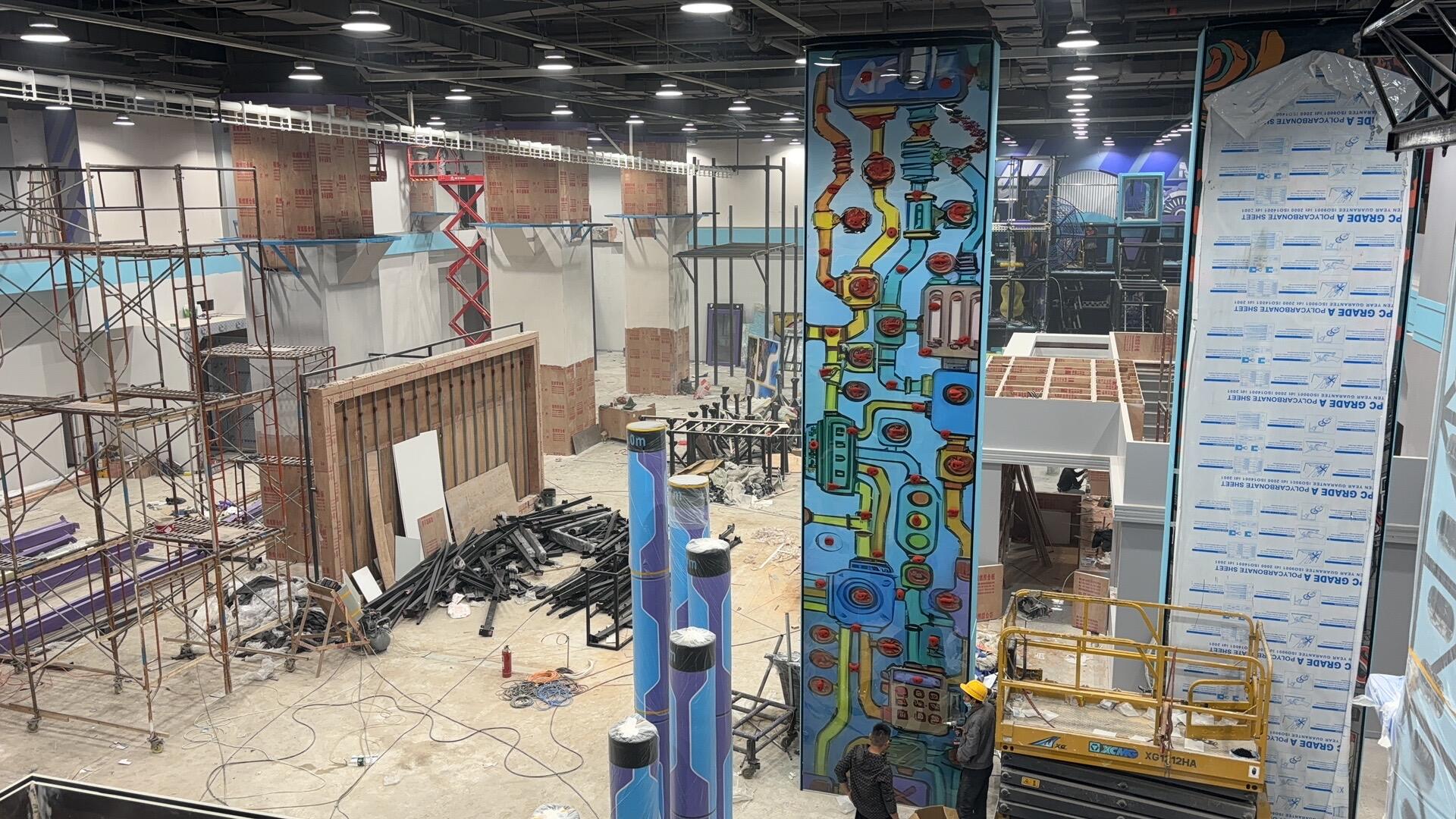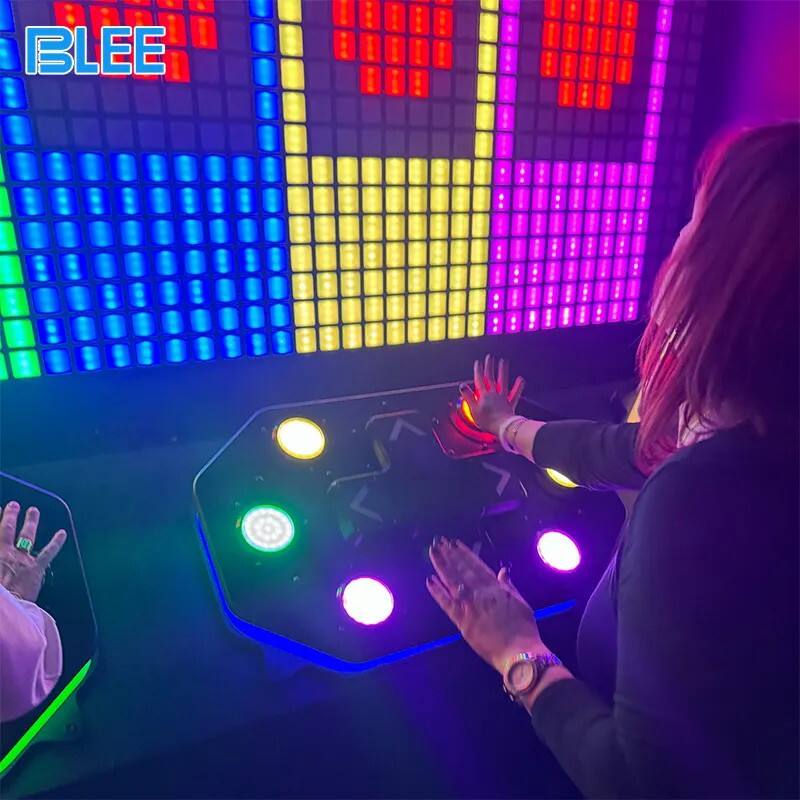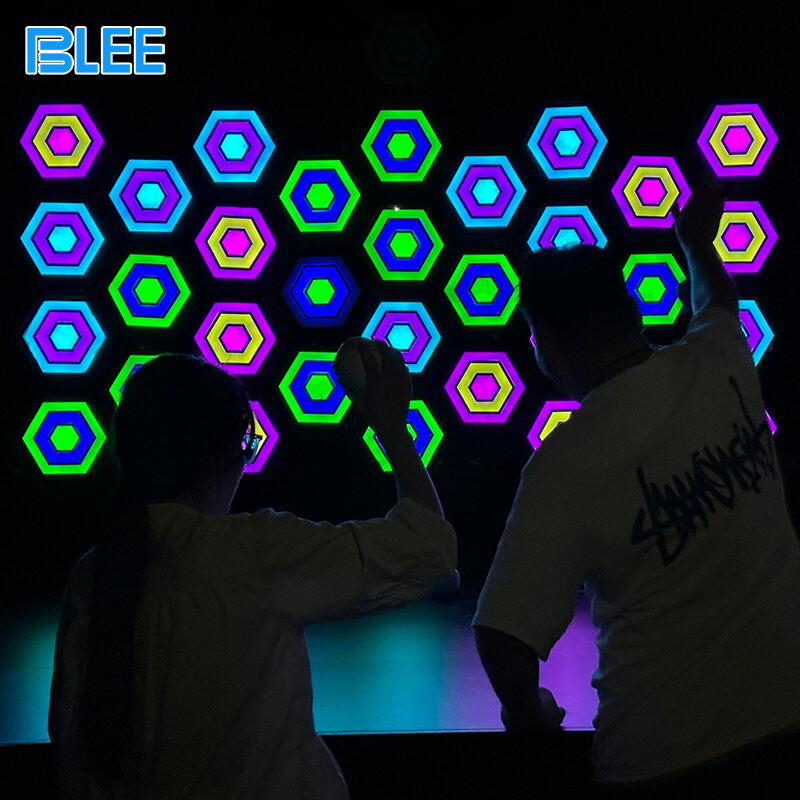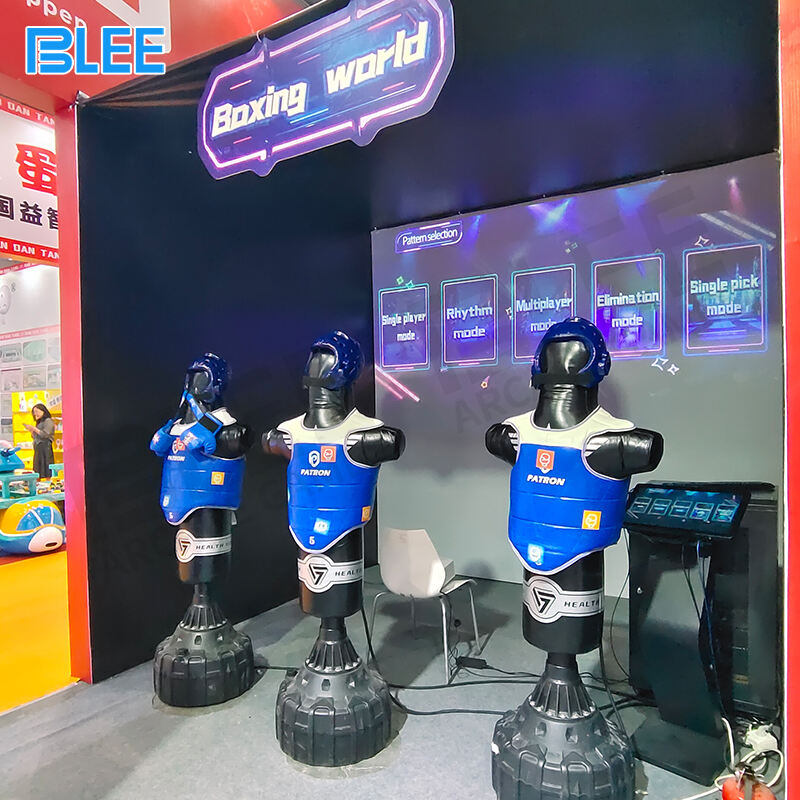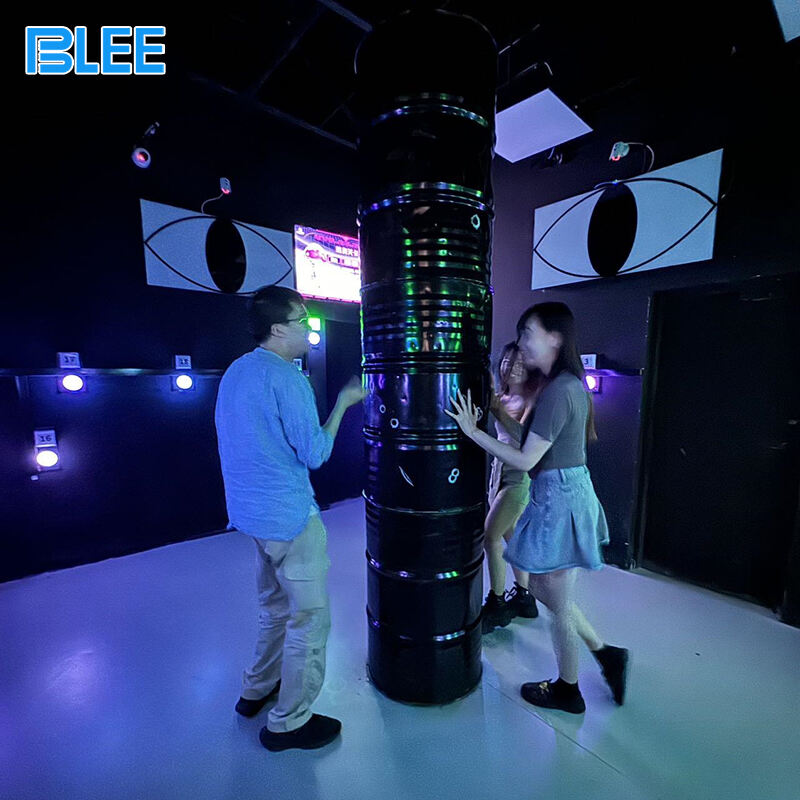The Role of Activation Games in Visitor Retention
Understanding Repeat Visit Motivations
Understanding why families return to family entertainment centers (FECs) is essential in designing effective activation games. Psychological factors play a major role, especially the drive for social engagement and family bonding. Research indicates that 60% of repeat visitors return primarily for these shared experiences. Designing activation games that cater to different age groups is crucial. These games should address various motivations, from thrill-seeking adventures for teens to interactive play zones for younger children. Additionally, the feedback loop created by guest satisfaction fosters loyalty, ensuring guests return. An effective marketing strategy that communicates the unique value of these game offerings further strengthens this loop, inviting families back for more memorable experiences.
Balancing Skill Challenges and Accessibility
Designing activation games that cater to a wide range of skills is paramount for visitor satisfaction and retention. It's essential to create games that are enjoyable for novice players while still challenging enough for the more experienced. Studies show that visitor satisfaction increases by 25% when games strike this balance of inclusivity. To achieve this, games could include features like gradual difficulty adjustments. This can motivate participants to keep playing, offering a rewarding experience that’s neither too easy nor too difficult, thereby maintaining their interest and encouraging repeat visits.
Creating Shareable Social Experiences
Integrating social media sharing options within activation games can significantly enhance the visibility and appeal of family entertainment centers. Doing so encourages user-generated content, which serves as powerful word-of-mouth marketing. Some successful case studies reveal that FECs leveraging shareable experiences have seen up to a 40% increase in social media mentions. The psychology behind social sharing reveals a strong connection between these practices and increased brand loyalty. Visitors who share their experiences tend to develop a personal attachment to the venue, which not only elevates their overall enjoyment but also boosts visitor retention. This approach is a mutually beneficial strategy to amplify engagement and loyalty.
Multi-Generational Activation Game Types
Interactive Sports Simulators (Golf, Basketball)
Interactive sports simulators are revolutionizing family entertainment centers by engaging users across all ages and promoting physical activity within family dynamics. These simulators offer a blend of virtual reality and real-world action, allowing people to indulge in sports like golf and basketball in a digital environment that feels real. One of the most appealing aspects of these simulators is their ability to increase visitor engagement by an impressive 30%, creating high-energy, family-bonding experiences. Moreover, establishing partnerships with local sports teams or brands can further enhance these experiences. By hosting unique events or promotions in collaboration with well-known sports figures or teams, centers can leverage these simulators to draw in more visitors, offering not just entertainment but an unforgettable interaction with their favorite sports personalities.
Augmented Reality Treasure Hunts
Augmented reality (AR) treasure hunts are an innovative way to promote teamwork and engage visitors of all ages at family entertainment centers. These interactive hunts use AR technology to transform ordinary settings into captivating adventure zones, providing a digital layer of excitement over real-world locations. According to studies, 70% of participants express a keen interest in engaging with AR experiences after their first exposure. This opens up new opportunities for partnerships with AR developers to create customized treasure hunts tailored to specific venues or themes. By integrating these hunts into the center's offerings, businesses can offer unique and memorable experiences that not only captivate existing guests but also attract new ones intrigued by cutting-edge technology.
Soft Play Ecosystems for Early Childhood Development
Soft play ecosystems play a crucial role in supporting the developmental milestones of toddlers and young children, offering a safe and stimulating environment for honing motor skills and social interaction. Such areas encourage exploratory play, essential for early childhood development, while also increasing the duration of visits by an average of 20%. Designing these ecosystems requires meticulous attention to safety standards, ensuring that every element is both secure and engaging. Parents often value these tactile and interactive play spaces, as they allow children to learn through play while ensuring their safety. By focusing on creating a playful yet educational atmosphere, entertainment centers can cater specifically to families with younger children, making them feel welcome and fostering long-term loyalty.
Trampoline Park Fusion Activities
Trampoline parks are evolving by integrating traditional trampolining with innovative activities such as dodgeball and gymnastic classes, known as fusion activities. This blend of traditional and modern attractions enhances the entertainment value and increases the frequency of repeat visits by 50%. Trampoline parks offering fusion activities provide thrilling, high-energy experiences that captivate not just children but families seeking active leisure options. Additionally, centers can benefit significantly from offering group packages or family deals. These promotions encourage social gatherings, such as birthday parties and team-building events, fostering a sense of community and increasing user engagement over time. By appealing to families looking for varied and dynamic entertainment, trampoline fusion activities help ensure longevity in visitor satisfaction and attendance.
Space Design Strategies for Immersive Play
Zoning Principles for Indoor Playground Flow
Zoning principles are crucial in shaping the flow within indoor playgrounds, maximizing visitor experience and safety. By segmenting play spaces into distinct zones—such as toddler areas, adventure zones, and quiet corners—we can create an environment that feels both inviting and secure. This strategic zoning encourages exploration and play, contributing to an enriching visitor experience. Real-world examples of successful indoor playground layouts have shown that applying effective zoning principles can increase space usage by as much as 35%. By integrating these principles, we ensure that the indoor playground is not only entertaining but also operationally efficient, promoting a seamless flow of visitors throughout the space.
Dynamic Lighting in Kids Play Areas
Dynamic lighting plays a significant role in creating captivating play areas that enhance moods and energy levels for both children and adults. Research by environmental design experts has uncovered that well-lit environments can boost playtime by 20%. By implementing dynamic lighting systems, such as color-changing LEDs, we can simulate different times of day or adapt to various themes, transforming the atmosphere within play areas. These carefully curated lighting effects not only uplift mood but also make the play experience more engaging and memorable, providing an added dimension to the indoor playground experience and encouraging longer stays.
Modular Equipment for Seasonal Refreshes
The inclusion of modular equipment is a strategic advantage for playgrounds seeking to maintain visitor interest with seasonal updates. This adaptability allows for consistent changes and fresh experiences, vital for keeping the play area exciting and engaging throughout the year. With data suggesting that such updates lead to a 25% increase in retention rates, the benefits are clear. Additionally, forming partnerships with manufacturers specializing in modular playground equipment can facilitate effortless transformations of play areas, ensuring they reflect current trends and seasonal themes and providing ongoing value to returning visitors.
RFID Wearables for Personalized Game Difficulty
RFID technology revolutionizes the way children and adults experience games by personalizing game difficulty based on individual skill levels and past achievements. This customization not only enhances visitor satisfaction but also strengthens loyalty, leading to a reported 30% increase in return visits to entertainment centers. Such personalized experiences foster a deeper connection with visitors, cementing the place of indoor playgrounds and soft play areas as enjoyable destinations. However, with RFID systems, privacy concerns must be addressed. Implementing strict data handling policies, such as anonymizing data and ensuring transparency, can alleviate these concerns and protect visitor information, thereby bolstering trust.
VR Story Campaigns with Progress Tracking
Virtual reality (VR) story campaigns captivate young audiences by weaving engaging narratives into immersive gameplay. These campaigns allow players to track their progress, contributing to a 40% surge in user engagement compared to traditional, static gaming experiences. VR not only entertains but also provides educational value, making it a preferred choice in trampoline parks and kids' play areas where dynamic learning through play is encouraged. Experts in digital storytelling emphasize the educational benefits; story-driven games can enhance cognitive abilities and creativity, offering both entertainment and developmental advantages to players.
Mobile Apps Bridging In-Person/Digital Play
Mobile apps are a vital tool in enhancing the synergy between physical play and digital experiences in family entertainment centers. These applications can offer rewards for in-person visits, creating a seamless continuum between digital and physical spaces. Case studies have shown that venues using mobile apps see a 35% boost in return rates, underscoring their effectiveness in retaining customers. Integration features such as augmented reality (AR) can further enrich the experience, keeping visitors engaged and eager to explore new adventures. By continuously updating app features and aesthetics, entertainment centers can maintain the appeal of their indoor sports facilities and trampoline parks, ensuring a fresh and exciting visitor experience.
Operational Optimization Essentials
Preventative Maintenance Schedules for Playground Equipment
Establishing a preventative maintenance schedule is crucial to ensure the lasting durability and safety of playground equipment. Regular maintenance not only extends the lifespan of indoor playground assets but is shown to decrease equipment failures by around 30%, according to industry standards. This not only reassures visitors but also enhances their confidence in the safety of your facility. It is advisable to create comprehensive checklists or utilize specialized software tools to streamline maintenance processes effectively. Such measures can contribute significantly to maintaining a safe and smooth operational environment, ensuring a positive experience for all visitors.
Staff Training for Experience Curation
Staff training is essential for providing curated experiences that reflect your brand's messaging and ethos. Studies indicate that well-trained staff can significantly enhance visitor experiences, potentially leading to a 20% boost in positive reviews. By focusing on ongoing education and development, staff members remain current with the latest trends in entertainment and customer service. Effective training programs should encompass not only initial training sessions but also regular workshops and updates. This comprehensive approach ensures that employees are equipped to adapt to changes in industry standards and new interactive features, ultimately elevating the overall visitor experience.
Real-Time Capacity Management Systems
Implementing real-time capacity management systems can drastically optimize visitor flow and maximize the utilization of venue space. Effective management of venue capacity is documented to increase visitor happiness ratings by as much as 25%. These systems allow for careful monitoring and adjustment of visitor numbers, ensuring that overcrowding is avoided and guests can enjoy amenities without long waits. Integration with existing ticketing systems can further streamline operations, providing seamless experiences from entry to exit. This not only enhances operational efficiency but also increases the likelihood of return visits, as patrons appreciate the well-managed, pleasant atmosphere.
Data-Driven Retention Analytics
Heat Mapping Visitor Movement Patterns
Heat mapping technology is essential for understanding visitor movement patterns, which helps Family Entertainment Centers (FECs) optimize their layout and flow. By analyzing these patterns, FECs can see which areas attract the most visitors and adjust layouts accordingly to improve spatial optimization. Research has shown that optimized space usage can increase the amount of time visitors spend in specific areas by up to 40%. This prolongs engagement and boosts customer satisfaction by creating a seamless experience. Practically, heat mapping data can be used to redesign game placements and pathways to enhance visitor flow and enjoyment, making the center more appealing and efficient.
Reward Program Participation Metrics
Tracking reward program participation provides invaluable insights into enhancing customer loyalty and retention strategies. By analyzing participation, businesses can identify which rewards pique interest among visitors and tailor programs to meet these interests. Statistics suggest that well-structured reward programs can boost repeat visit rates by as much as 60%. Methods for creating appealing rewards include offering experiences or items that resonate with target demographics, ensuring the offerings are attractive and relevant. Understanding these metrics allows FECs to construct compelling retention strategies that keep customers coming back for more.
Post-Visit Sentiment Analysis Implementation
Employing post-visit sentiment analysis is crucial for gathering customer feedback and driving continuous improvement. This approach helps FECs by highlighting areas in need of enhancement while reinforcing elements that visitors love. Case studies indicate that FECs implementing sentiment analysis have experienced a 30% improvement in customer satisfaction ratings. Several tools are available for carrying out effective sentiment analysis, employing strategies that span social media, email follow-ups, and feedback apps to gather a comprehensive view of user experiences. These insights empower businesses to make informed decisions that continually enhance the guest experience.
The integration of data-driven techniques such as heat mapping and sentiment analysis enhances the retention strategy of FECs. Each of these elements provides actionable insights into visitor behavior and satisfaction, setting the stage for operational improvements and innovative customer engagement throughout the venue. The strategic use of analytics ensures businesses remain competitive and continue to offer enriching experiences that align with evolving consumer expectations.
Emerging Activation Innovations
Haptic Feedback Integration in Trampoline Parks
Haptic feedback technology is revolutionizing trampoline parks by enhancing the sensory experience for players, making it more engaging and immersive. By integrating haptic elements, participants can feel vibrations and subtle motions that mimic real-life scenarios, which significantly enhances engagement levels. A recent study found that 50% of visitors reported increased enjoyment when haptic feedback was incorporated, pointing to its potential to elevate the sensory experience considerably. As we look to the future, these technologies offer exciting opportunities but also raise ethical considerations concerning user data privacy and the balance between engagement and overstimulation.
Adaptive AI Opponents in Arcade Games
The implementation of adaptive AI in arcade games marks a strategic advancement in gaming experiences, where the AI learns and responds to player skills to foster challenge and engagement. Research suggests that games with intelligent opponents see a 40% increase in return rates, indicating that players value the dynamic challenge. For developers, this entails leveraging complex algorithms and ongoing development to ensure AI continues to meet player expectations. The seamless integration of AI in arcade games not only keeps the game exciting but also continually adapts to evolving player skills, providing a personalized gaming adventure.
Projection-Mapped Collaborative Challenges
Projection mapping is a cutting-edge technology being used to create collaborative challenges that captivate groups and promote teamwork and interactivity. These experiences transform environments, allowing participants to interact with spatial visuals dynamically, resulting in increased involvement. Evidence shows that participant engagement can rise by 30% in team-based scenarios. Collaborations with multimedia artists can further enhance the aesthetic experience, creating visually stunning and interactive environments. Through projection mapping, games are transformed into engaging platforms where creativity and teamwork are celebrated.
Why Work With BLEE?
Free Project Planning
Free design-driven solutions tailored to your theme, audience, including product selection, quotation, layout design, venue decoration design and business plan.
Globally Proven Solutions
Trusted by 80+ countries with venue bulidding for cross-cultural appeal and sustained ROI.
Complete Range of Products
We have a complete entertainment and amusement product line, can meet your procurement needs in one stop, maximize your cost savings.
7-15 Day Guaranteed Delivery
Modular production system ensures quality equipment shipped within 15 days, minimizing downtime.
Risk-Free Logistics
Doorstep delivery , damage protection, and real-time cargo tracking.
24/7 Lifelong Support
Multilingual technical assistance, instant troubleshooting, and lifetime maintenance commitment.

